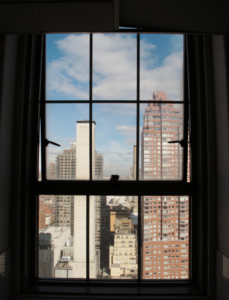Ever since the advent of the positive psychology movement, we’ve been barraged with advice about how to become happier. And, yet, by many metrics we’re still fairly downbeat. Rates of anxiety and depression are rising not falling.
The divide between our efforts to become happier and our actual levels of happiness surely makes us feel worse. But the problem with happiness isn’t our effort to achieve it. It’s pursuing it in the first place.
Happiness, quite simply, is overrated.
Far from being a sustainable trait, happiness is a state that waxes and wanes. Like pleasure, which fades after eating the first potato chip from the bag, happiness is, as they say, fleeting. I’m a bit embarrassed to admit that it took me so long to emotionally understand something that seems so intellectually obvious.
But giving up the pursuit of happiness has made me, well, happier.
 Without the expectation of finding lasting happiness, I’m more accepting of unhappy experiences and feelings. Such acceptance doesn’t paper over the difficulties. But it creates a lot less stress and a lot more ease. (What we resist persists.)
Without the expectation of finding lasting happiness, I’m more accepting of unhappy experiences and feelings. Such acceptance doesn’t paper over the difficulties. But it creates a lot less stress and a lot more ease. (What we resist persists.)
I’ve also come to realize just how much we need the things that, on occasion, make us feel bad.
Around Mother’s Day, I fell into conversation with a nurse at a doctor’s office about memories of our mothers – both of whom were deceased. We spoke about how we loved them, but also about the things they did that annoyed us. (I’m a Mom so I write that with absolute love.)
He recalled that when he drove his mother around town she had a grating habit of naming all the signs they passed out loud in an endless, ongoing narrative. (“Lenny’s deli, Mattress Town, Pep Boys”) He laughed, remembering how much that used to bother him and then said:
“I often tell people that life’s good and bad experiences, the things we love about people and the things we don’t love about people, are all woven into a tapestry and if we pull out the thread of a bad experience the whole cloth unravels.”
Whether we admit it or not, we need our petty annoyances and frustrations. We need our dismay and uncertainty. We need our anger and our sadness. We need them because they are the very things that help us define happiness when it arrives.
The feelings that are the flipside of happiness arise within the context of less pleasurable experiences that give our life shape and meaning. Visiting a sick friend in the hospital isn’t as fun as shopping on Amazon, but it’s arguably more fulfilling. Raising kids is a rollercoaster of highs and lows, but being a parent is meaningful. Tackling a new project at work might have equal parts frustration and reward.
In her book, “The Power of Meaning: Finding Fulfillment in a World Obsessed with Happiness,” author Emily Esfahani Smith relays a story about Robert Nozick, the 20th Century philosopher.
Nozick designed a thought experiment. He asked people to imagine that they could live in a magical tank that would give them the happy experiences they wanted. He then asked if they would want to live in the “feel happy” tank for all of their lives. Most people said no. Why? Because as Smith says while you might feel good living in a happy tank, your life wouldn’t be good. A person in a happy tank is a bit like a paperweight. “He has no identity, no projects and no goals to give his life value,” writes Smith.
In other words, as Nozick’s experiment concluded, there’s more to life than feeling happy. What brings meaning to each of our lives is different. But it will likely be a mix of endeavors and experiences that invite frustration, disappointment and even anger as well as gratification.
Paradoxically, embracing the bad begets the good and even the happy.
On My Mind
A window onto the world is a wondrous thing. Life affirming and sweet, taking time to look out the window and mindfully behold whatever arises in the view of your soft gaze is a practice worth trying.
Recently, I stood on the eighth floor of a high-rise in Toronto doing just that: Practicing window meditation for 30 minutes. Boring, you say? Far from it.
During my window meditation, the world below and the sky above unfolded in continually surprising ways. Cars and people moved like insects in the streets and on the sidewalks below. Crows dove from trees to windowsills and down to the ground, pecking for breadcrumbs. Building vents opened and closed, twirling steam into the air.
Beyond the edges of the teeming city, the stillness of Lake Ontario flowed into a baby blue sky. And I was a small part of it all.
Highly Entertaining
What’s your relationship to fear? Small and meek? Bold and bring it on? Do you have enough mindful awareness to know?
Perhaps there’s no better way to gut-test your reaction to fear than by standing on a high-diving board and daring yourself to jump into the pool below. This video called the Ten Meter Tower provides a poignant and very human look at the varying ways we relate to the primal emotion of fear.
Have a look and bring some mindfulness into play. Notice if any sensations arise as you watch. Then ask yourself: What would I do?